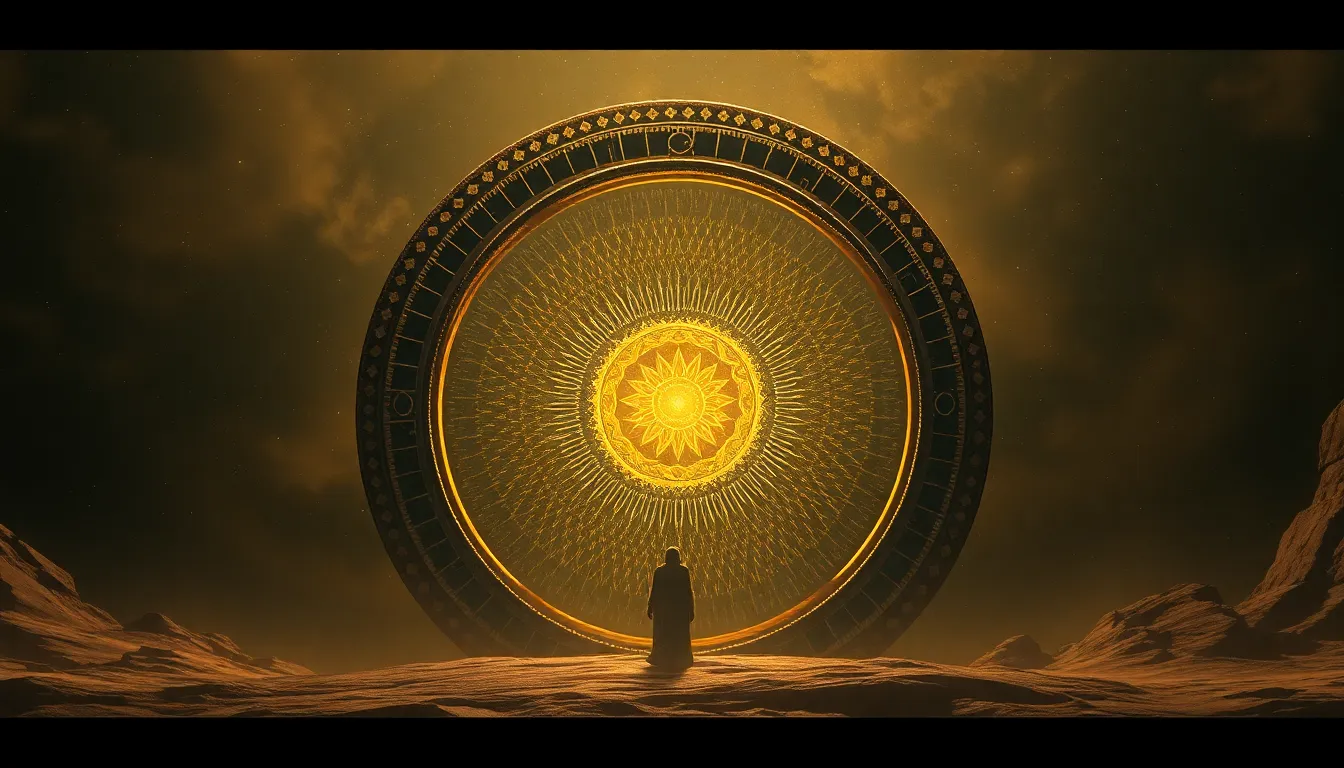The Tale of the Sacred Circle: Myths of Unity and Wholeness
I. Introduction
The concept of the Sacred Circle has been a powerful symbol across various cultures throughout history. Defined as a geometric figure with no beginning or end, the Sacred Circle represents unity, wholeness, and the interconnectedness of all things. Myths surrounding the Sacred Circle serve as cultural narratives that illustrate our shared human experience, emphasizing themes of unity and wholeness.
These myths are significant not only for their storytelling but also for their ability to convey deeper truths about existence, relationships, and community. This article explores the Sacred Circle from multiple perspectives, examining its historical context, significance in indigenous cultures, interpretations in Eastern philosophies, and relevance in modern spirituality, as well as its psychological implications and representations in art and literature.
II. Historical Context of the Sacred Circle
The origins of the Sacred Circle can be traced back to ancient cultures across the globe. It has served as a symbol in various civilizations, including:
- The Neolithic cultures of Europe, where stone circles were built for ceremonial purposes.
- Ancient Egyptian cosmology, where the sun’s circle represents life and eternity.
- The Celtic tradition, which viewed the circle as sacred in rituals and celebrations.
Symbolism of the Sacred Circle often encompasses:
- The cyclical nature of life and death.
- The idea of inclusivity, where all beings are connected.
- A representation of the cosmos, where the universe is perceived as a whole.
In rituals and ceremonies, the Sacred Circle plays a pivotal role. It serves as a space for gathering, healing, and spiritual connection, creating a sacred and intentional environment for participants.
III. The Sacred Circle in Indigenous Cultures
Indigenous cultures, particularly among Native American tribes, have rich interpretations and practices surrounding the Sacred Circle. For these communities, the circle is not just a shape but a profound representation of the natural world and the interconnectedness of life.
The circle embodies:
- Harmony with nature and respect for the earth.
- Community bonding, where each person contributes to the whole.
- Spiritual journeying, where individuals seek understanding and wisdom.
Stories of creation often feature the circle as a central theme, illustrating how the world was formed through circular motions or the cycles of seasons. These narratives promote a sense of belonging and remind individuals of their place within the wider community and cosmos.
IV. The Sacred Circle in Eastern Philosophies
In Eastern philosophies such as Buddhism and Hinduism, the symbolism of the circle is deeply embedded in spiritual teachings. The circle is often seen as a representation of:
- The cycle of birth, death, and rebirth (samsara).
- The notion of unity and interconnectedness, where all beings are part of the same existence.
- Enlightenment, often depicted in mandalas, which are circular diagrams representing the universe.
Myths and stories in these traditions illustrate wholeness, such as:
- The Buddha’s teachings on the Middle Way, which emphasizes balance and harmony.
- The Hindu belief in the cyclical nature of time and the eternal return of the divine.
V. The Sacred Circle in Modern Spiritual Movements
In contemporary spirituality, there has been a revival of the Sacred Circle, often seen in practices such as circle gatherings, meditation groups, and community healing circles. This resurgence emphasizes:
- The importance of community and shared experiences.
- Personal growth through introspection and connection with others.
- The circle as a metaphor for wholeness in one’s journey.
The Sacred Circle has influenced modern healing practices, promoting holistic approaches to wellness that address the mind, body, and spirit. It serves as a tool for fostering personal development and building strong, supportive communities.
VI. Psychological Interpretations of the Sacred Circle
From a psychological perspective, the Sacred Circle represents wholeness and integration. It symbolizes the complete self, where all aspects of identity are acknowledged and embraced. This concept relates to personal identity in several ways:
- The circle serves as a reminder of the importance of balance in one’s life.
- It encourages individuals to explore their inner selves and accept all parts of who they are.
- Circular narratives in therapy can promote healing by providing a framework for understanding one’s life journey.
Research has shown that engaging with circular symbols can enhance mental well-being, fostering a sense of connection and belonging.
VII. The Sacred Circle in Art and Literature
The Sacred Circle has been represented in various forms of visual arts, from ancient carvings to contemporary paintings. Artists often utilize the circle to convey themes of unity and wholeness, inviting viewers to reflect on their own connections to the world around them.
In literature, examples abound where authors explore the themes of the Sacred Circle, such as:
- The cyclical nature of stories, where beginnings and endings are intertwined.
- Characters who undergo journeys of self-discovery within a community context.
- Books that illustrate the importance of relationships in achieving personal fulfillment.
These representations shape cultural understanding by reminding us of our shared experiences and the interconnectedness of all narratives.
VIII. Conclusion
In conclusion, the Sacred Circle is a potent symbol that transcends cultures and time, encapsulating the essence of unity and wholeness. It serves as a reminder of our interconnectedness and the importance of community in our lives.
As we reflect on the myths of unity and wholeness in today’s world, we are called to embrace the Sacred Circle in our personal and communal lives. By doing so, we can foster deeper connections with ourselves, others, and the world around us, paving the way for a more harmonious existence.




